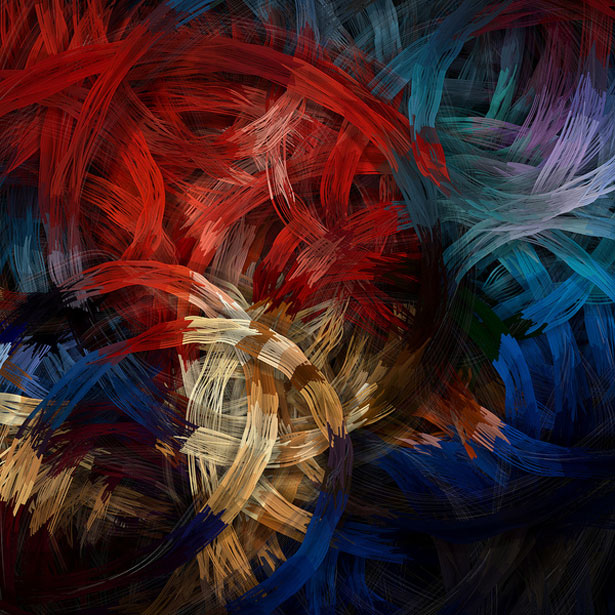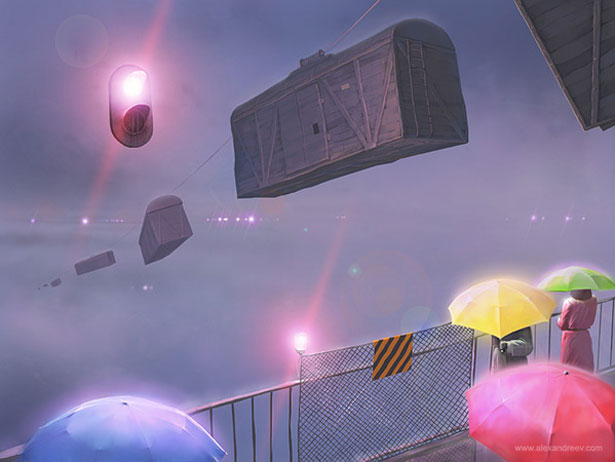 The concept of the left and right brain only lately popped up in the late 1960's, but since has become a well-known part of human psychology.
The concept of the left and right brain only lately popped up in the late 1960's, but since has become a well-known part of human psychology.
While we all use both sides of the brain, each of us has a dominant side, and this dominant side makes up for a huge part of our personalities.
Each individual thinks a certain way, has more interest in certain areas, and above and beyond all — is most effective in certain ways. An accurate understanding of the left and right brain can help one to become more productive, efficient, and creative.
This article will cover a basic understanding of what the left and right brains are, and each of their traits. We'll also go into how we, as creative people, can harness this understanding of the left and right brain to be more creative, as well as succeed in other work-related tasks.
What They Are, and Their Difference
Some may have heard of this, others may have not. Before we get too into specific examples to aid in our benefit, let's go over exactly what the left and right brain are, and their associated characteristics.
 Our brain is divided into two halves, as most of us know: the left and right side. Each side processes information very differently than the other, and the biggest difference is the visual aspect.
Our brain is divided into two halves, as most of us know: the left and right side. Each side processes information very differently than the other, and the biggest difference is the visual aspect.
The right side of the brain looks at visual reference as a whole, whether it be a landscape, object, or piece of artwork, and then works its way into noticing finer details.
The left side on the other hand, first sees the details and puts them together to form the bigger picture.
Our brains use both of these sides, mixing and matching each side's abilities for a fully-functional human brain. However, each of us has a dominant side that leans more towards the behaviors of that respected side.
There are a number of characteristics, many of which could be considered personality traits, that a person with either type of dominate side has:
Right Brain
Those with a right-side dominant brain depend more on visual references for understanding and are often times visual learners.
They are more emotional, swayed by feelings, and are able to better understand and reflect on these feelings. Furthermore, right-brained thinkers are very intuitive and curious about the world.
Finally, as a down side, they tend to be disorganized, lacking in time-management, and unable to prioritize well.
Left Brain
The left brain is the side that handles organization and logic.
Because of this, those that have a dominant left side are also very organized; they prefer schedules and deadlines, and love rules and regulations. They are more auditory learners, and are better at using words to remember things rather than visual aids.
They process ideas in a step-by-step, algorithmic way, and are therefore less prone to error.
Their Relation to Art, Design, and Creativity
As one may have probably already guessed, those with dominance in the right brain may be more naturally creative.
It's easy to assume this because for one, right-brained thinkers are less common than left, so it seems as though one would be seeing the world differently from everyone else.
Also, the natural heightened visual nature and curiosity tend to make the mind never stop thinking of the alternative — as well as how it can be applied visually.
Those with a dominant left brain are far more common, and far more analytical. They may feel at disadvantage for not having that 'natural' creativity. Realistically, though, left-brained people can be just as creative; they just come about it in a different way.
To better understand the artistic nature of both sides, let's take a look at a few examples of artwork.
Abstraction = Right Brain
Right brained people may lean more towards abstract art, because of its lack of order and disorganization. Abstraction also gives no boundaries, so it can be considered more 'outside-the-box', or creative.
Abstract art is also known to portray emotion, even with no hard visual evidence. A right brained person may more easily be able to pick up on an abstract piece's deeper meaning.
Orderly Art = Left Brain
In contrast to abstraction, left brained people may be more attracted to a more 'orderly' form of art — either photo-realistic, or otherwise. As long as it is artwork with guidelines, form, and sense, it works.
Below is a painting, with plenty of creativity — but also with little abstraction.
Find Your Dominant Side
Before discovering how to harness one's own creativity, one must find which side of the brain is dominant. As we know ourselves best, we may already have a good guess based on the definitions above. However, for more accurate results, there are a number of quizzes one can take online:
- Right Brain/ Left Brain Quiz for Artists
This quiz is targeted at artists, with the questions concerning painting. Even if you do not paint for your practice, you can relate them to similar practices. For example, if you are a web designer, apply the questions to your digital workspace, and your online tools to your painting supplies, etc. - Right Brain vs Left Brain Creativity Test
This is a more generalized test and may be more helpful to a wider audience. Furthermore, upon completion, this test gives you very detailed, highly accurate results, as well as further information.
Take the quizzes above and read through some more information. It may be surprising what you find, and you will probably already begin to brainstorm ways of making your work better based off of the results.
Benefit Your Work
Let's now look into some further ideas of how we can specifically better our work by understanding our own psychology.
After taking the tests above, you may have found out that we are not either 100% right brained, or 100% left brained. We are a mix of them both, while some traits may lean far to the opposite side, and other may not.
Also, in certain traits, we may only be a certain percentage right/left brained, while the remainder of the percentage leads the opposite way.
We each have such unique characteristics, and an in-depth analysis of each (second test listed above) can help. Let's now look over a few strategies that can help anyone with any combination of traits:
Understand Your Style
As shown above in this article, right brained people tend more towards abstraction while left-brained people tend more towards realism. If we have mixed characteristics, we may tend towards mixes in these forms of art as well.
Find your style, and your preferred mix of abstraction and realism. Adding more form may be for those with stronger left sides, but with hints of right-brained thinking.
Abstraction with a hint of form may be for those who lean right, but have a bit of left-brained thinking. It's really a gentle balance, with an associated art/design style to go with that balance.
View a number of different types of art, and make note of which interest you the best. Save them in a collection, and review them later to find out their similarities, to test for their amount of abstraction, and to analyze how they relate to your own way of thinking. Then, reflect on that in your own work.
Abide by Your Brain
If you like organization, then use it in your art. Don't feel the need to be more creative by being more quirky, different, or strange.
One can be just as original by using measurements, form, pattern, and rules. For left-brained people try this trick: create one rule to abide by for an entire design, and then come up with varying ways of altering that rule throughout the design to bring more variety.
For example, use only one shape and turn it into a large picture, use only one color in different shades, or try isometric artwork (below).
If you don't like form, and would rather try out extreme abstraction, then go for it.
Don't hold yourself to limits because you feel that artwork needs organization — it doesn't. It can, but doesn't have to. Right brained people should try experimenting with different colors, patterns, textures, and whatever else, all while keeping the big picture in mind.
Because right dominance means seeing the big picture and then the details, imagine the outcome first, and then detail along the way. (For right-brained web designers, this is one more reason as to why wireframing is so important.)
Work Around Your Faults
Because we can now better understand our positive traits, we can also better understand our faults. Identify them, and think of ways to build upon them.
Instead of fighting disorganization everyday (both in artwork and business/life), use tools and resources to make it easier, and try to make certain organization habitual.
If one has trouble finding creativity because they are overly analytical, like above, don't fight your natural instinct of order. Instead explore new methods for harnessing creativity and practice new techniques.
Remember, nobody's graphic design or artistic talents are perfect at first — no matter what their natural traits may be. Both sides must work at it, and must be better able to accept their faults and work on them to better themselves.
Wrapping Up
Understanding the right and left sides of the brain is a great way to better your work, and to obtain a better understanding of who you are as an individual. Often times, the path to better creativity lies in science and logic — in this case, psychology.
As we can better understand ourselves at this deeper level, we can better understand what we are naturally good at and what we should put our focus on.
In contrast, we can also better identify where we're lacking, and think of smarter solutions for combating our faults.
Written exclusively for WDD by Kayla Knight.
Feel free to share your thoughts on this matter, as well as any recommendations to fulfill our natural faults, or strive in our natural talents.



















